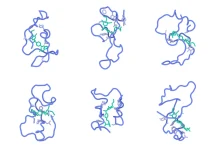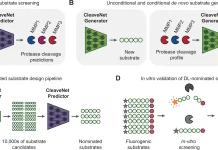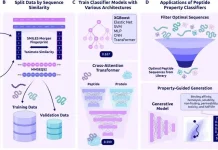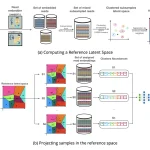A recently published work by researchers from the Wuhan Textile University, China, and Michigan State University, USA, has addressed the use of transformer models in the context of drug discovery and related domains. Transformers are deep learning models designed primarily for language-based tasks, and their scope is expanding into various scientific areas. This blog post will look at how transformers are used to improve the processes of drug discovery to help see the future of this area of research.
Understanding Transformers
Transformers are the latest neural network architecture, which has taken strides in the area of natural language processing. Unlike the classical recurrent neural networks (RNN), sequential transformation allows users to encode information in blocks instead of time series, which in turn results in better efficiency in machine translation and text summarization losses.
The Building Blocks of a Transformer
- Encoder: This part of the transformer processes the input sequence and extracts relevant information.
- Decoder: This part of the transformer creates the sequence from the encoded information.
- Self-Attention Mechanism: Self-attention is one of the main features of transformers. It helps in addressing the issue of long intrinsic dependencies by enabling each element in a sequence to focus on all other elements in the sequence.
- Positional Encoding: As the computations are parallel in the case of a transformer, positional information of the elements is provided through positional encodings to describe their relative position within the sentence.
How Transformers Work:
- Input Embedding: The original sequence information is translated to numbers.
- Encoder Layers: The input sequence is made to pass through a series of encoder layers, with each layer constituted of self-attention and feed-forward dense networks.
- Decoder Layers: The decoder layers perform the task of taking the output provided by the encoder together with the output generated earlier to perform the task of generating the final sequence.
- Output: A foreordained output is presented at last using a linear layer with a softmax.
A Deep Dive into Transformer Applications in Drug Discovery
The transformer, one of the architectures of neural networks, is a game changer in the area of natural language processing. Its network structure allows for the encoding of long-range dependencies and contextual information, making it well-suited for a plethora of tasks. In the past few years, however, a resurgence of interest has also been noted in the drug design space, with transformers being used for protein design, molecular dynamics, drug target identification, and drug lead optimization, among others.
Protein Design and Engineering
Predicting the amino acid sequences of proteins as well as their properties with the help of transformers enables the synthesis of proteins of various types with set functions. A transformer network created by DeepMind-AlphaFold, for instance, has been successful in this respect by predicting protein structure with a high accuracy rate at a contact map resolution. This is important to drug discovery because protein structure information is key in the process of drug target identification and also in the drug designing process, as the small molecules must interact with proteins.
Identification of Drug Targets
Using the data of molecular structures, transformers can suggest a drug target. By looking for proteins or other molecules that initiate the disease, it is possible to develop drugs directed against these molecules. For instance, transformers have been employed to discover new targets for the treatment of cancer and other diseases.
Drug Virtual Screening
Drug virtual screening is the process of evaluating and searching through diverse libraries of molecules to seek out possible drug candidates. Affinities that drug molecules have for the target protein, which can be done using transformers, would hasten the drug discovery. By predicting these affinities accurately, there is a higher selection of the molecules that are good candidates for the drugs to be developed.
Drug Lead Optimization
After this potential drug lead is discovered, there are threats to further integration of structural alterations to enhance other drug properties such as potency, selectivity, and solubility. Transformers can also suggest changes in the drug leads that will be more efficient in their intended use. In addition to helping optimize drug candidates through molecular editing, transformers may help develop novel drugs at an earlier stage.
Molecular Dynamics Simulations
By incorporating molecular dynamics simulations and transformer models, it is possible to understand the dynamics of molecules and their interactions. In this way, transformers can be used to compute approximate potential energy surfaces or force fields essential for any molecular dynamics simulation. This could enable scientists to observe how molecules behave in the human body or a laboratory, for example.
Drug Addiction
Additionally, researchers have begun using transformers to investigate drug addiction mechanisms as well as suggest some pharmacological agents for the disease. In this way, by evaluating the available information about gene expression, protein-protein interaction, and so on, transformers enable understanding of the mechanisms of addiction and ways of treating it.
Small Data Set Challenges
Another advantage of transformers is achieving satisfactory results with small datasets. This is of great significance in drug discovery since it is not always easy to come up with large datasets. Meaningful information can be drawn even with little data by the use of transformers, thus enhancing the effectiveness of the researchers with small datasets.
Chemical and Biological Image Analysis
The interpretation and deduction of images depicting a compound or processes biological in nature may also be made by the use of transformers. From these images, information regarding the structure and function of specific molecules and cells can also be derived, and to this end, they can also include training of transformer-based models in diagnosing disease-related transformation by analysis of images of cells.
Single-Cell Data Analysis
Single-cell data analysis relates to the analysis of the actions taken by single cells within a certain population. Single-cell data can also be evaluated with giant transformers to help understand the cellular function and its diversity. Such single-cell data and its trends can be further used to find out how cells are involved in the causation of disease and consequently designed to curb that condition.
The Future of Transformers in Drug Discovery
This trend will likely continue, and we can expect to see even more novel uses of transformers in drug discovery in the future. Some possibilities for future extensions could be:
- Multimodal Learning: Integrating sequencing technologies such as genomics/proteomics with text-based transformer models for better biological understanding.
- Large Language Models: Employing LLM to create new molecules and ideas.
- Customizing Transformers: Creating customized transformer models for specific areas of drug discovery.
Conclusion
As discussed in this blog post, it is apparent that transformer models could change the drug discovery paradigm. Ranging from in-silico protein design and protein-ligand docking to molecular modeling and in-silico drug discovery, transformers are proving helpful in different facets of this important field. It can be safely said that more advanced forms of transformers will be developed by researchers. The models’ ability to work with very large data sets, long-range dependencies, and non-linear shapes makes them helpful for researchers in the field of drug discovery.
With all these advantages, scientists can speed up drug development, find new drug candidates, and enhance the effectiveness of available drugs with the use of transformers. In particular, their attention to the changes and transformation of drug discovery towards the development of more efficient and effective drugs will, and has already begun, play a leading role in the provision of human health improvement.
FAQs
Transformers represent a paradigm shift in neural network structures as far as natural language processing is concerned. This means they can take and process information located far apart from each other within the sequence. Hence, they are well suited for complex applications such as translation and summarization of text.
A. Transformer can be beneficial on many levels of drug development:
– Protein designs and re-engineering
– Molecular behavior
– Detecting possible drug targets.
– Screening drugs by using computational methods.
– Optimization efforts of various leads for the drug
A. The use of transformers has some advantages:
– Large amounts of data can be provided.
– Long-range dependencies are tolerated reasonably well.
– The ability to operate in any scale of dimensions that offer utility.
– The promise of speeding up the process of finding new drugs.
A. This does include some challenges such as:
– Cost in computation.
– Model decision interpretability.
– Having sufficient size of datasets.
If you have any other questions, please feel free to leave a comment below!
Article Source: Reference Paper
Follow Us!
Learn More:
Anchal is a consulting scientific writing intern at CBIRT with a passion for bioinformatics and its miracles. She is pursuing an MTech in Bioinformatics from Delhi Technological University, Delhi. Through engaging prose, she invites readers to explore the captivating world of bioinformatics, showcasing its groundbreaking contributions to understanding the mysteries of life. Besides science, she enjoys reading and painting.
















